The Insider: Green Agenda in Carroll Gardens
The Insider is Brownstoner’s weekly look at the state of interior design and renovation in the borough of Brooklyn. It’s written by Cara Greenberg, a design journalist who blogs at casaCARA: Old Houses for Fun & Profit. Find The Insider here every Thursday at 11:30AM. THIS c.1900 ROW HOUSE is about as green as…
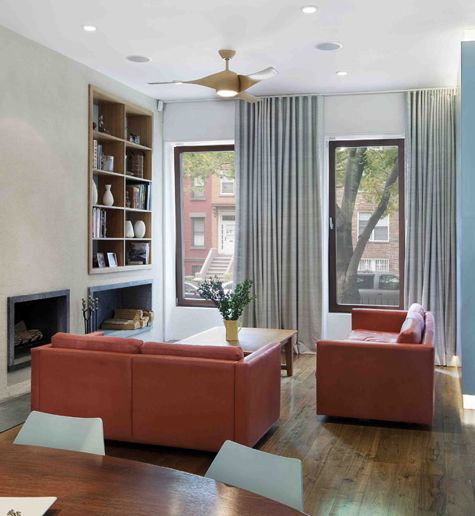
The Insider is Brownstoner’s weekly look at the state of interior design and renovation in the borough of Brooklyn. It’s written by Cara Greenberg, a design journalist who blogs at casaCARA: Old Houses for Fun & Profit. Find The Insider here every Thursday at 11:30AM.
THIS c.1900 ROW HOUSE is about as green as you can get without being LEED-certified. “Our clients had a very strong green agenda, but a normal budget,” says Jeff Sherman of the DUMBO architecture firm Delson or Sherman, which took on the job of converting a three-unit house that had had the same owner for 50 years into a single-family residence for a couple with two kids.
“LEED certification winds up being a surprisingly expensive process,” Sherman explains, citing the paperwork involved in documenting sources and the required follow-up inspections. Instead, Sherman and his partner Perla Delson, who are accredited to do LEED projects, strove for maximum impact at minimum cost. The result is a project that still has “strong green credentials,” as Sherman puts it. The contractor was the Brooklyn-based Square Indigo.
The 20’x44′ four-story building is chock full of sustainable strategies, including radiant heat flooring, solar water heating, spray foam insulation, a high-efficiency boiler, and a whole-house fan (a rainwater collection system and photovoltaic panels are yet to be implemented). Daylight is maximized by enormous skylights, as well as the replacement of one-third of the back wall with expanses of glass. Materials were re-purposed whenever possible, even the little ‘Juliet’ balconies at the rear of the house, which are segments of the original fire escape.
Now sleek and utterly modern, the house had some old doors, mantels, pressed tin, and bathroom fixtures, all of which were salvaged, though not for use in this project. “The owners worked Craigslist and Build It Green to make sure any possible thing that could be used by somebody, was,” Sherman says. “The house was picked clean by the time we started.”
Photos: Seong Kwon
Much more after the jump.
Delson or Sherman built out the living room wall and recessed niches for a bookshelf and a fireplace and wood storage area, the last two lined with soapstone. The wall itself is ‘parged,’ a non-flammable concrete that is troweled on. The wood floors are prefinished engineered FSC-certified walnut flooring from Mountain Lumber. The triple-glazed tilt and turn windows are from the German company Bieber. The etched-glass front door has a peephole of glass left clear. The sofa and settee are 1980s Knoll designs.
The block of cabinets with the refrigerator and wall oven stops short of the ceiling. “We wanted the whole floor to feel like a single space,” Sherman says. Uplights are imbedded in the top.
A chalkboard wall hides a large pantry closet, a coat closet, a powder room, and some appliances (including a freezer), their doors invisibly integrated into the chalkboard surface.
The master bedroom, on the second floor, is separated from the master bath, below, by a panel of translucent laminated glass (opposite the window wall).
The floor and the vanity top are both slate.
An enormous skylight over the playroom in the middle of the top floor funnels light down the staircase to the floors below. A bank of grills that draw off hot air are tucked into the skylight. The children’s bedrooms, on either side of the playroom, have pocket doors that slide open to make the entire floor one big play space. The floor is plywood, painted with low V.O.C. paint.
The vanity in the children’s bath is inexpensive prefinished maple veneer plywood, with a Corian top. The top four inches were sandblasted off the mirror, with lights hidden behind. There’s also a slot of skylight above.
Ladders were removed from the existing fire escape to create small balconies off the back wall (fire escapes are not required on houses with fewer than three units). The big windows are a combination of fixed and operable panes.
Steps at the rear of the backyard are concrete with wood planks on top. The steps, walk, fence, and patio are made of ipe, a Brazilian hardwood. The homeowners were hands-on when it came to landscaping, creating raised beds for vegetables and flowers. The fig tree in the middle is a relic of the house’s previous incarnation.
To catch up with previous installments of The Insider, go right here.

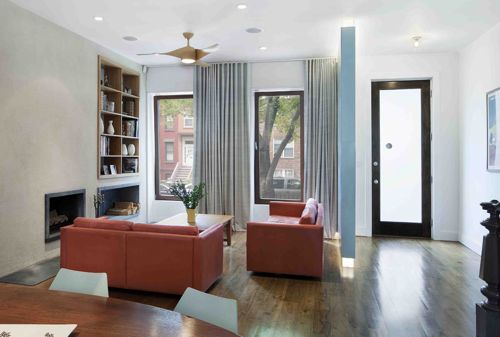
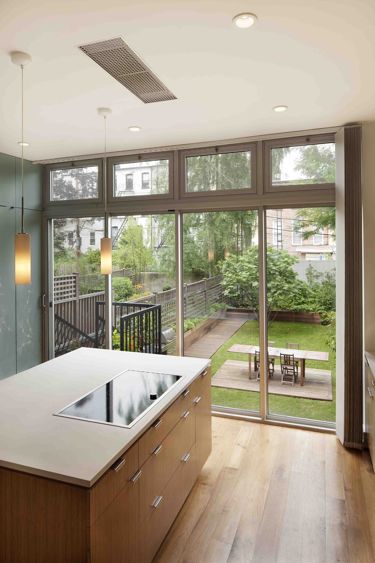
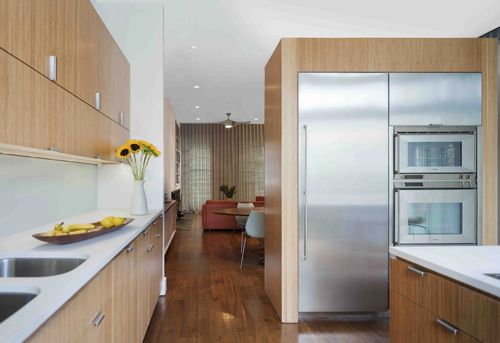
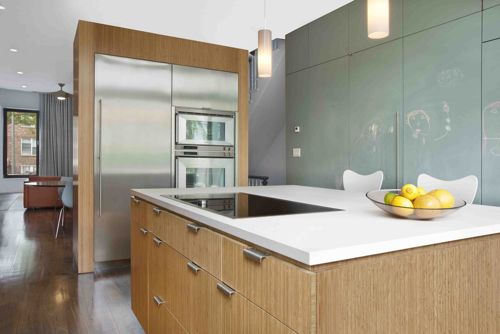
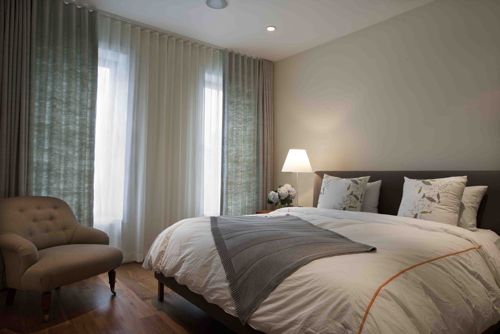
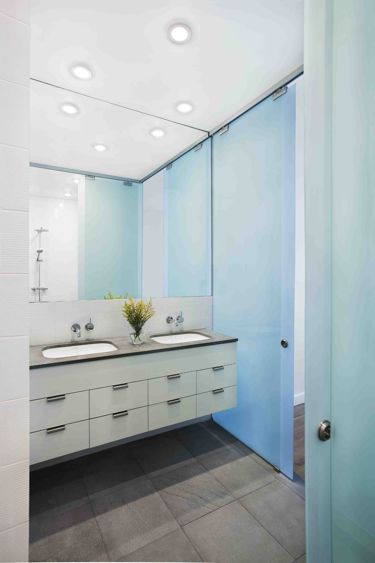

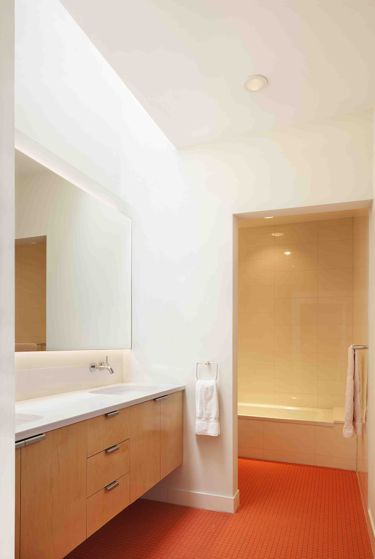
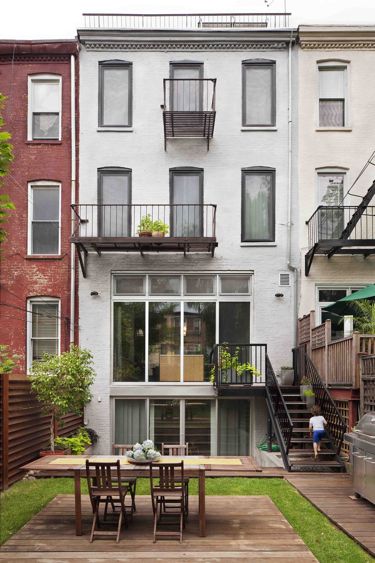
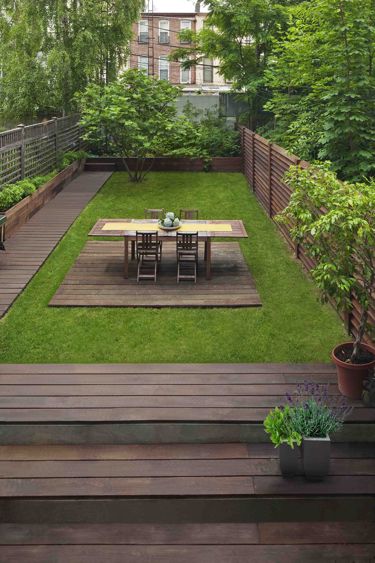
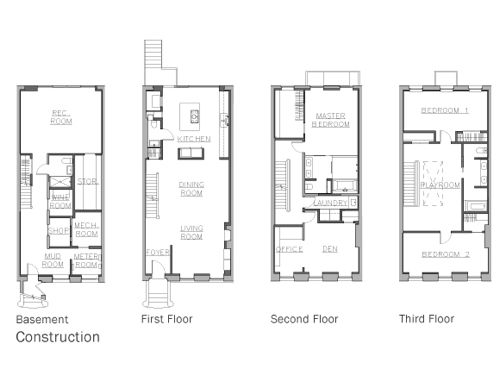




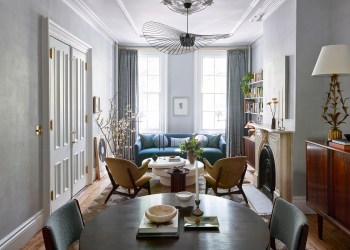
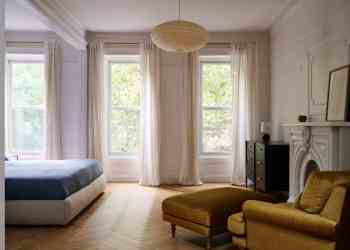


Dave, you’re losing it.
You’re acting a little scary today.
Dave, you’re losing it.
You’re acting a little scary today.
Dave, you’re being particularly toxic today and not amusing.
Shut up.
Dave, you’re being particularly toxic today and not amusing.
Shut up.
Dave, stop being such a jackass. You are such an attention-hound. My goodness, can’t you find a massage parlor nearby?
There are three color-coordinated toys, German I’m sure, personally selected and positioned by the architect -and you think that makes it look like human beings inhabit here? Look at the bookshelves, they look like a West Elm display.
Snappy, I loves you more than diet soda, but you don’t want to do this to your house no matter how many lotto millions you win!
There are three color-coordinated toys, German I’m sure, personally selected and positioned by the architect -and you think that makes it look like human beings inhabit here? Look at the bookshelves, they look like a West Elm display.
Snappy, I loves you more than diet soda, but you don’t want to do this to your house no matter how many lotto millions you win!
I doubt this renovation/rebuilding cost under one million.
I didn’t miss it, that was my favorite part.
I guess that’s what they mean by “build it green”
The German windows alone must have cost ten thousand each.